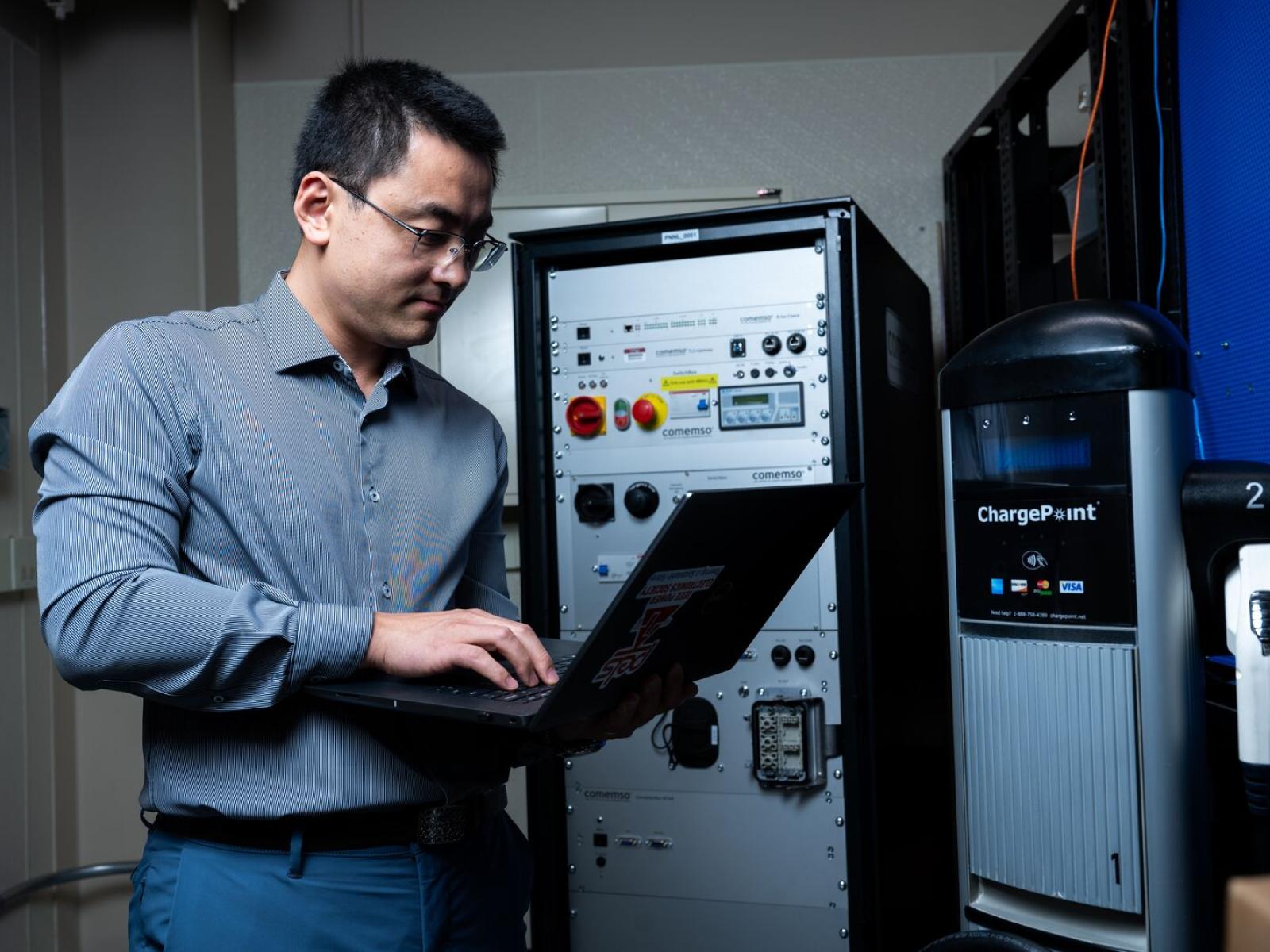Power Electronics Laboratory
Control development capabilities

Xiaoyuan Fan in the Power Electronics Lab at PNNL.
(Photograph by Andrea Starr | Pacific Northwest National Laboratory)
The Power Electronics Laboratory brings real-world insights to testing and development of control concepts and technologies to enable energy systems integration. Viewed as an experimentation “sandbox,” researchers mine the laboratory’s control and computational resources to learn how their ideas fare in actual energy systems and devices.
Research in this lab focuses on the integration of inverter-based resources and distributed energy resources, through innovative modeling and control design, end use measurement, testing, and validation of power electronics equipment and technologies. The testbed leverages advanced equipment including battery cyclers, an EV emulator, AC source and load, DC source and load, and digital measurement equipment.
The Power Electronics Lab can also make use of PNNL’s Interoperability Testbed Network with connectivity to other lab resources, such as the Grid Storage Launchpad and Transactive Campus. This networked system allows integrated system studies and reliability testing of communications and control capabilities.
The laboratory is located within the PNNL Systems Engineering Building, and supports research funded by the U.S. Department of Energy’s Office of Electricity and Office of Energy Efficiency and Renewable Energy, as well as the Department of Homeland Security.